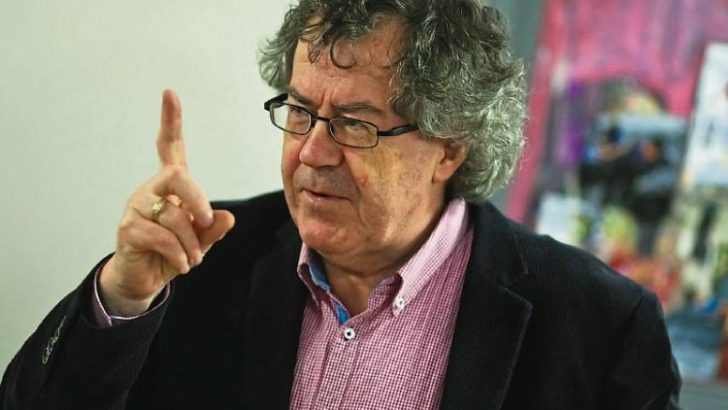Rhyming History: The Irish War of Independence and the Ballads of Atrocity in the Valley of Knockanure
by Gabriel Fitzmaurice (North Kerry Literary Trust , €15.00; can be ordered from the Kerry Writers’ Museum, info@kerrywritersmuseum.com, 24 The Square, Listowel, Co. Kerry V31 RD93)
G.K. Chesterton once famously rhymed: “The great Gaels of Ireland are the men that God made mad, for all their wars are merry and all their songs are sad.”
There was not much merriment in North Kerry in April and May 1921. On April 7, Mick Galvin was fatally wounded during an IRA ambush on a party of British soldiers as they cycled back to their billets in Listowel after a visit to the residence of Sir Arthur Vicars in Kilmorna.
On April 14, Kilmorna House was raided by the IRA. They led Sir Arthur to the end of his garden and shot him, allegedly for having provided information to the British authorities. They also burned down Kilmorna House.
Captured
On May 12, the crown forces captured four unarmed members of the IRA at Gortaglanna, Knockanure, near Kilmorna. They took them into a field and lined them up to shoot them. Although wounded, one of them – Con Dee – made a miraculous escape. This is the incident encapsulated in the ballad The Valley of Knockanure.
The most popular version of the ballad is attributed to Bryan MacMahon. In this interesting monograph Gabriel Fitzmaurice describes its provenance.
In 1946 Pádraig Ó Ceallacháin, principal of Knockanure National School, provided Mr MacMahon with a few verses on the incident at Gortaglanna together with a sworn statement by Con Dee, the survivor, and requested that he compose a ballad that would be historically accurate.
This Mr MacMahon did and he had the first copies of the ballad printed.
Mr Fitzmaurice sets out other versions of the ballad by local well-known rhymers: Tim Leahy, Dan Keane, Paddy Drury and Thade Gouran. He compares them to the MacMahon version and assesses the accuracy of their narrative of the event at Gortaglanna. He notes how the ballad is printed in The Clancy Brothers and Tommy Makem Song Book and how it is recorded by Paddy Tunney, the well-known Irish traditional singer.
Mindful of the influence a ballad can have on public perception over a very long time, he is scathing in his comment on a version recorded from Joe Heaney by Ewan MacColl and Peggy Seeger, in which “history and poetry part company”.
Profiles
Mr Fitzmaurice concludes with profiles of two of those who were executed at Gortaglanna and the musical score for the various versions of the ballad, as well as providing a compact disc of its renditions by Karen Trench, Christy Goulding, Jim Lyons and Jimmy Herbert.
On a personal level this affectionate treatment of the ballad struck a chord. One of my most vivid memories of growing up in Listowel was listening to the ballad singers on fair-days. The Valley of Knockanure was one of their favourite ballads. And ever etched in my memory is the line “And the banshee cried when our heroes died in the Valley of Knockanure”.
A salute to the North Kerry Literary Trust and the gifted Gabriel Fitzmaurice for this insightful and deeply moving publication.


 Gabriel Fitzmaurice
Gabriel Fitzmaurice 